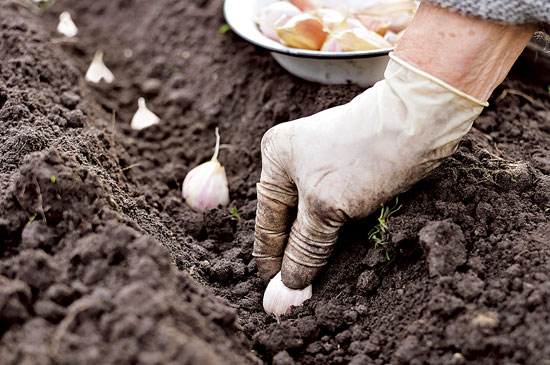Just like onions, garlic is a cool weather crop. Garlic requires cold weather because the bulb should split into cloves and sometimes trigger division of cells. Having said that, the best time to plant it is in the late fall or the early winter, around 2 weeks before the first frost.
These are the 5 most common tips for growing garlic that you don’t want to miss:
1. PLANT SEED GARLIC
The germination rate for domesticated garlic seed is extremely low. Actually, there are sterile seeds of most varieties, because of the thousands of years of selection for several characteristics that discourage fertility, almost all garlic is propagated from cloves.
2. PLANT DEPTH OF GARLIC DEPENDING ON WINTER CLIMATES
You’ll have to begin with solid globules, then pop them separated into individual cloves. Plant the biggest, most beneficial cloves one for every gap, root end down. In the event that you expect a gentle winter, an inch is sufficiently profound; in regions with serious winters, plant them 2-4 inches profound. Reasonable cautioning: it’s best to obtain your seed garlic, as it’s called, from a nearby source, or it might require a 2-3 year time frame to adjust to your atmosphere.
3. PLANT OATS IN GARLIC BEDS FOR NATURAL MULCH
Garlic development loans itself well to mulching. Here’s a quick case that is particularly proper for regions with harsher winters: sow oats in your garlic beds in late August or early September. At the point when it’s a great opportunity to plant the garlic, slice cuts through the oats to plant your cloves in. The garlic plants won’t have an issue coming up through the oats cover. The oats should kick the bucket back when it gets icy,and frame a successful dead mulch. On the off chance that it doesn’t, you should expect that your garlic yields will be smaller, as the oats will lay hold of a portion of the water and supplements your garlic would otherwise use.
4. REMOVE SCAPE TO PRESERVE BULB SIZE
Most garlic plants will put out a woody blossoming stem in the end called a scape. You’ll have to cut or snap it off so that the plant doesn’t squander vitality on it, as the improvement of the scape will bargain the span of the knob. When you evacuate scapes, make sure to do as such on a sunny day so the injuries will dry out rapidly. What’s more, don’t simply toss the scapes on your manure heap—if you get them while they’re delicate, they make incredible panfry or pesto. On business ranches, they’re sold for $1-3 for each pound.
5. DON’T OVER-FERTILIZE GARLIC PLANTS
One more thing: you should be using a high-phosphorous compost, for example, bat guano or fish supper to empower development in your garlic. Nonetheless, don’t over-prepare it, otherwise it will turn out to be excessively verdant and the knobs won’t be as expansive as you’d like.

